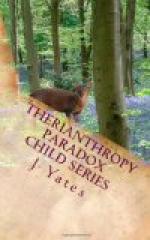|
This section contains 660 words (approx. 3 pages at 300 words per page) |

|
THERIANTHROPISM is a term derived from the Greek compound of thēr ("wild beast") and anthrōpos ("human") and is usually used to denote a deity or creature combining the form or attributes of a human with those of an animal. As an analytic category, it has little salience, since scholars have variously included under its rubric not only animal-headed gods, were-animals, mythological demihumans and monsters (such as centaurs, sphinxes, and minotaurs) but also examples of animal impersonation in rituals, spirit possessions by animals, mythological beings of animal aspect but human character (such as the North American Indian figure Coyote), and anthropomorphic gods (such as Zeus and Dionysos) who sometimes transform themselves into animals. Ideas about the supernatural linkage of humans and animals are probably universal—even in cultures with anthropomorphic monotheism, there are ideas of were-animals, therianthropic demons, and the possession of human souls by animals. Visual...
|
This section contains 660 words (approx. 3 pages at 300 words per page) |

|


